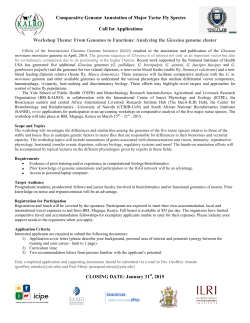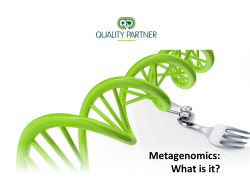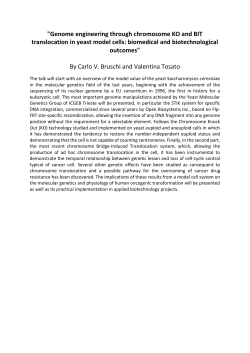
Full Highlight - BioEnergy Science Center
Review paper summarizes insights from 20 years of bacterial genome sequencing Background • In two decades since the first complete bacterial genome sequence, technical improvements and subsequent increases in biological knowledge and reduction in price have been dramatic. Approach • A review paper covers the progress in sequencing and analysis, specifically of microbial genomes, over the last 20 years. • Phylogenetic tress can be done with finer detail and the concept of pan and core genomes has expanded our concept of species. • New technologies allow science to begin filling the unculturable branches of the microbial tree of life. • As demonstrated by the E. coli genome, the core set of genes levels off quickly (at ~3100 gene families), while the pan-genome continues to grow. • In 1995 only two metagenomes projects were published in comparison to 20,000 today with terabytes of sequencing data available. • Newer technologies provide new insights into functions such as methylation and viral immunity. # gene families Outcomes Significance • Second and third generation sequencing have greatly reduced the cost of sequencing and made it accessible to a great many more individual investigators. • Sequencing of bacterial genome sequences is now a standard procedure and the information from tens of thousands of bacterial genomes has had a major impact on the view of the bacterial world. 2 genomes sequenced Top: genomes sequenced Bottom: Core and pan-genome of 2085 E. coli genomes. Core gene families have at least one member in at least 95% of genomes. Land, et al., “Insights from 20 years of bacterial genome sequencing,” Functional Integrative Genomics, online, 2015.
© Copyright 2025





















